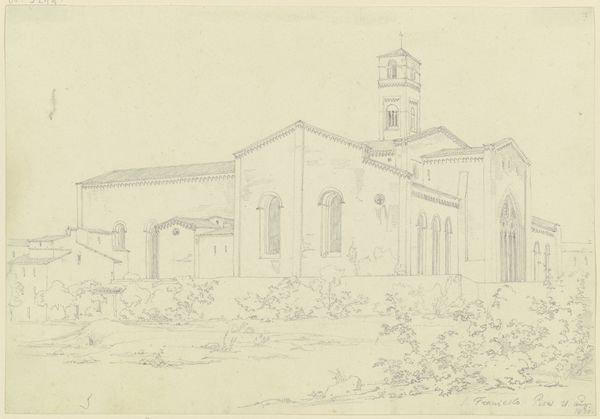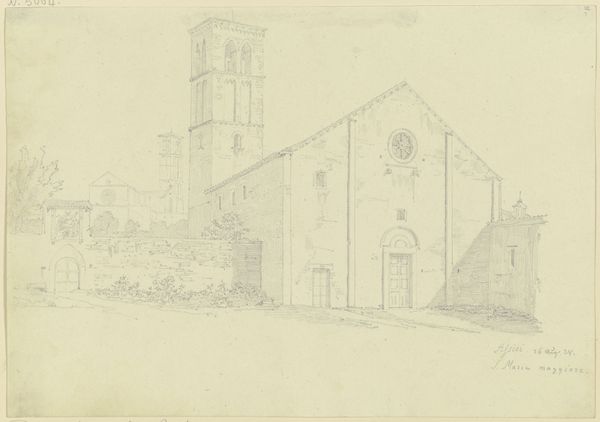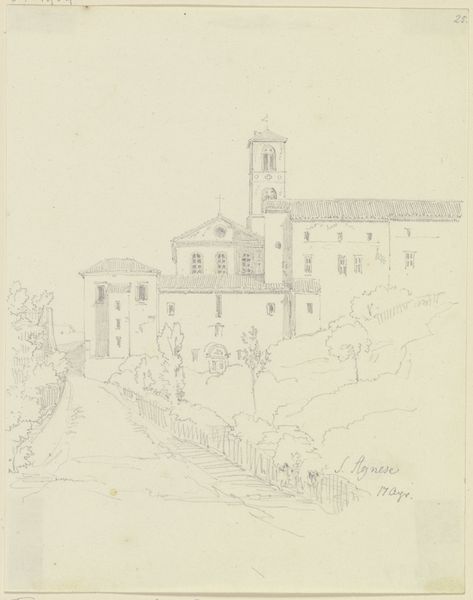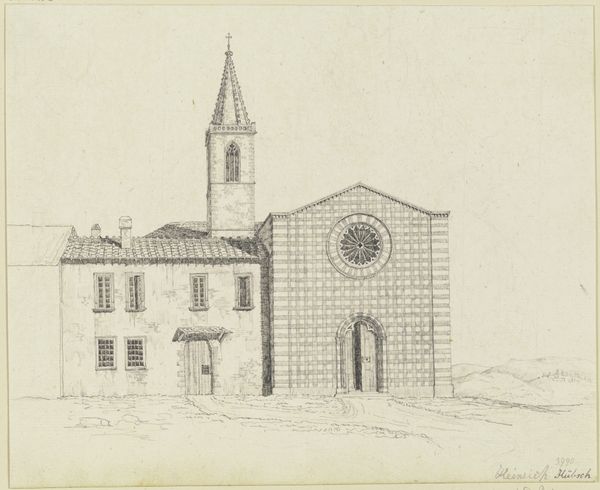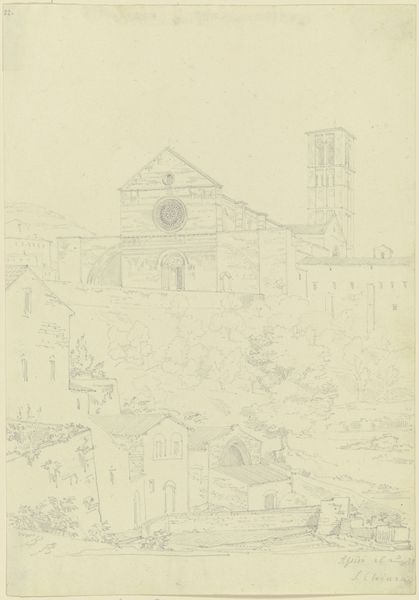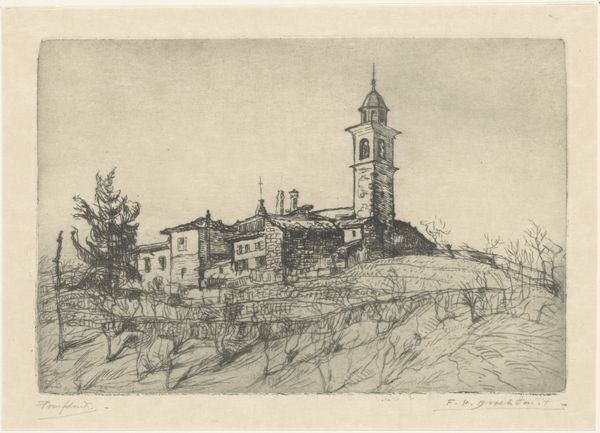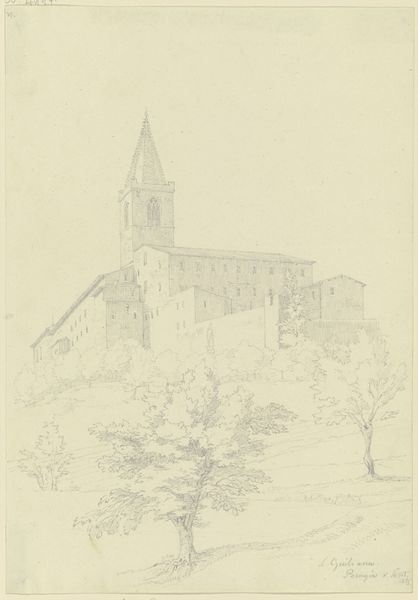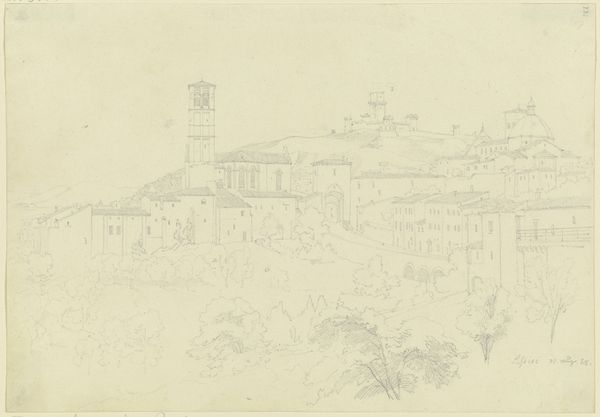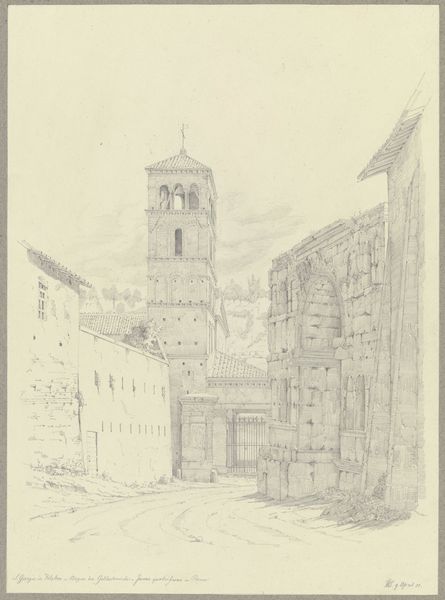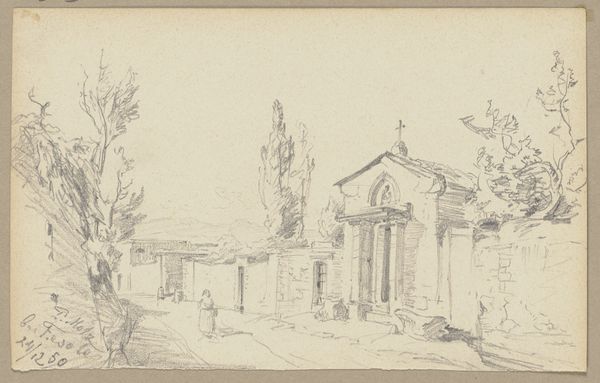
drawing, pencil, architecture
#
drawing
#
16_19th-century
#
pen sketch
#
landscape
#
pencil
#
architecture
Copyright: Public Domain
Curator: We’re looking at "S. Francesco al Prato in Perugia," a drawing made between 1811 and 1828 by Friedrich Maximilian Hessemer, currently residing in the Städel Museum. Editor: Ah, I find this instantly appealing. There's such lightness and airiness in its delicate lines; a quiet beauty that draws me in. Curator: Hessemer's choice of pencil and pen here is crucial; they emphasize the detailed architectural rendering. It almost feels like an architectural study, charting the relationship between building and landscape. Look at how the lines build up the forms. It's labor intensive. Editor: Precisely, I notice a devotion to precision, yet the very spareness makes you feel this is like…a memory? Like a dream fading into dawn. It suggests a kind of…transience despite depicting an enduring structure. Curator: And the building is not presented in isolation. Note the importance of the landscape and trees – Hessemer uses these to emphasize a very specific idea of Italian-ness and nature. The sublime combined with very careful production values. Editor: And what resonates for me, beyond the architectural detail, is the contrast between the stark building and what I see as nature trying to take over - little plants peeking out in front of what looks to be an otherwise carefully controlled church courtyard. You can imagine the seeds being blown from the hills and a story being whispered here. Curator: Absolutely. I mean, Hessemer is offering more than just an image of the building; the artist suggests nature reclaiming architecture – revealing his social commentary and maybe revealing how our perceptions of that era and location were being shaped through artistic reproduction. Editor: So while your vision helps me see how it relates to a kind of "social making", the image’s delicate balance between permanence and impermanence speaks quietly to my deeper senses, too. Curator: True, Hessemer allows us an insight into his world through line, form and ultimately, through what is both omitted and included. Editor: Ultimately, a beautiful example of an era immortalised in such delicate yet powerful strokes!
Comments
No comments
Be the first to comment and join the conversation on the ultimate creative platform.
